What Muscles Does Rebounding Work?
What Muscles does rebounding work
Rebounding is one of the most fun exercises available. For the best rebounders on the market, check out our latest article. It’s considered one of the best low impact exercises and incredibly effective at working a wide range of muscle groups.
A study showed that compared to running, the rebounders burn fat 50% faster! It’s a full body workout that strengthens your cardiovascular system and tones muscles.
What Muscles Does Rebounding Work? Rebounding activates 656 muscles all over the body and specifically works your abs, back, pelvic floor, glutes, quads, hamstrings and calves. It also boasts a number of other benefits like flushing out toxins and stimulating the lymphtatic system.
But let’s dive into what muscles are worked on the rebounder.
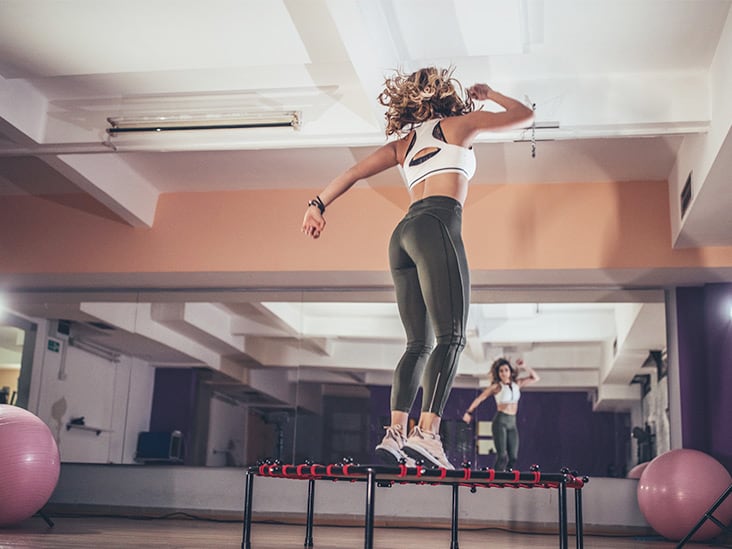
Rebounding Muscles Used
Lower Body
Quads and Glutes
The primary benefit of the rebounder is working out your legs. While the mat provides the resistance and takes the impact your glutes and quads activate with every jump.
This means during the entire movement your lower body remains engaged throughout to maintain balance and control. Rebounding can not only build strength in the legs but also tone them as the exercise is a repetitive load over a period of time.
Consider different types of exercises on the rebounder for extra variety. You can use the rebounder for squats and lunges for an all round glute and quad workout.
Consistent rebounding leads to a stronger and leaner lower body, the biggest benefit of this is it does not impact your lower body as much as other exercises like running. Jumping on a rebounder takes a lot less pressure off your knees and ankles.
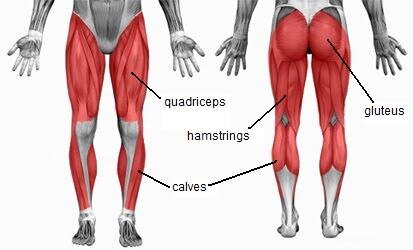
Hamstrings and Calves
Prolonged and repetitive bouncing on a rebounder can build hamstring and calf strength. All muscles within the calf and hamstring activate when you push off the mat into the air.
Not only this, jumping also strengthens the joints in the ankles as it takes the load when you land, remember the mat takes the majority of the force so your joints stay safe.
It’s important to properly warm up and stretch prior to rebounding so you don’t risk injury or strain your calves. Warm ups can consist of a light jog on the spot or rebounding at a slow pace.
Core Muscles
Pelvic Group and Lower Back
Focussing on your core is an important aspect of any well-rounded fitness programme, the lower back benefits greatly from a rebounder. Jumping up and down on a trampoline works your entire core, not just your abdominals, keeping your abdominals engaged through the rebounding movement helps protect the spine and lower back.
How this works is when you jump, your spinal muscles keep your back straight and stable by contracting. As this is down repetitively over a period of time it strengthens your back muscles.
In addition to benefiting the lower back your pelvic floor muscles are also worked. This group of muscles are located in the pelvic area and support internal organs such as the bladder.
Having a strong pelvic floor stabilizes the hip joints which is important for bladder control. Rebounding for as little as 15 minutes a day regularly will greatly activate the pelvic floor muscles.
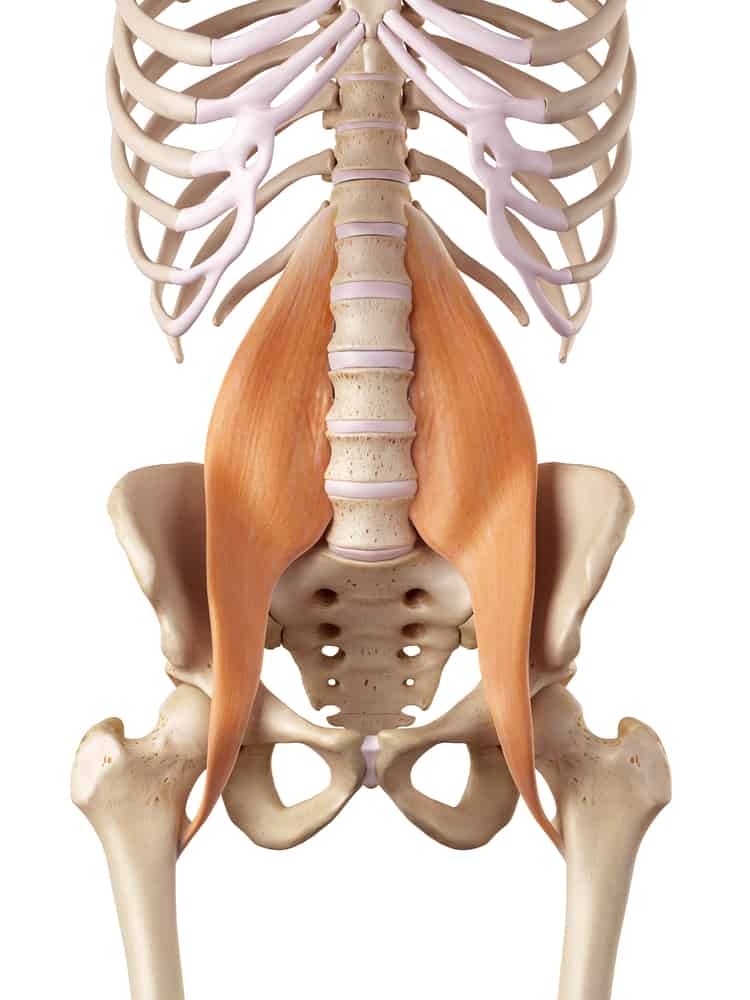
Does Rebounding Build Abs?
Rebounding is an excellent workout for your abdominals – some studies suggest that rebounding is more effective than crunches! The primary reason is that core isolation exercises such as crunches primarily focus on the rectus abdominus which is the front muscles you see in the mirror (the 6 pack). Whereas rebounding works all 4 of the abdominal muscle group.
When you land on the rebounder you instinctively tighten the abdominals which release as you jump. As this is a repeated activity its shown to be highly effective.
Heart
Don’t forget the most important muscle of all, the heart. This works just like all other muscles which people don’t consider.
You strengthen the heart through aerobic cardiovascular exercise. The more you work your heart the stronger it gets. If you regularly rebound it gets stronger like the other muscles in your body.
Some studies suggest that rebounding for 20 minutes as a cardiovascular workout can be as effective as running for 1 hour. A Study by NASA stated that rebounding and jogging produced similar oxygen consumption and heart rate levels.
But rebounding proved more efficient because it was less demanding on the heart from the biochemical data.
Upper Body
While rebounding might not directly target the muscles in your upper body, there are some things you can do to incorporate them where possible. Movements like jumping jacks will include the arms and shoulders, or you can extend your arms straight with each jump.
Some rebounders include removable resistance bands which you can hold onto while in use. You can use these resistance bands to work the arms while you bounce.
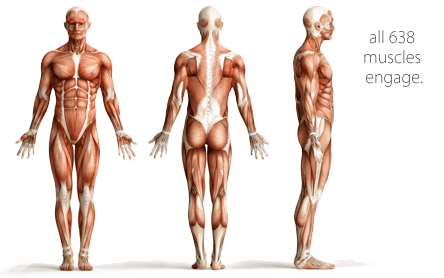
Does Jumping on a Trampoline Build Muscle
Although considered a cardiovascular exercise you can build muscle on the rebounder. The act of jumping up and down your muscles contract then relax.
This variation makes bouncing on a rebounder promote muscle building. Let me explain this further. Negative muscle contractions happen while lengthening under tension.
For example, in weight lifting if you were to lower a barbell while performing a bicep curl. During the curl, the upward movement is when the muscles contract, also referred to as the positive movement.
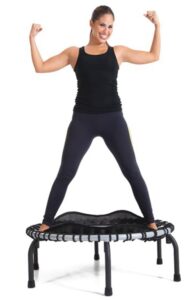
Negative (part of the) exercise required less energy than the positive part. Which is why in weight lifting you can hold up to 40% more weight than you can initially lift. This increased tension is what rebuilds muscles more efficiently as they breakdown.
Does Rebounding Build Muscle
Rebounding does not build muscle because it’s considered a cardiovascular workout.
On a rebounder you get the both types of positive and negative muscle contractions. As you move downwards is the negative contraction and as you push upwards is the positive contraction.
I would however recommend that for a muscle building workout this should be prescribed in addition to a weight resistance programme.
Rebounding Exercises
How Often Should You Use A Rebounder
There’s no strict guidelines on how often you should use a rebounder. A study showed that their participants who used a rebounder three days a week saw significant improvements in running speed. Depending on your fitness level will dictate how long your sessions should be, if you are a beginner consider performing shorter workouts until you build up some endurance.
Bottom Line
To start rebounding all you need is a basic, mini trampoline without much headroom.. Doing as little as 20 minutes a day is enough to stimulate all of the lower body muscles mentioned above and your cardiovascular system.
If you are new to exercise or want to get started with something at home, then give a rebounder a try for a low impact routine.
An ex-triathlete, fitness coach and writer with a Masters in Sports Physiology. Fitness is my passion and I've had my fair share of home fitness equipment tried and tested!



One Comment